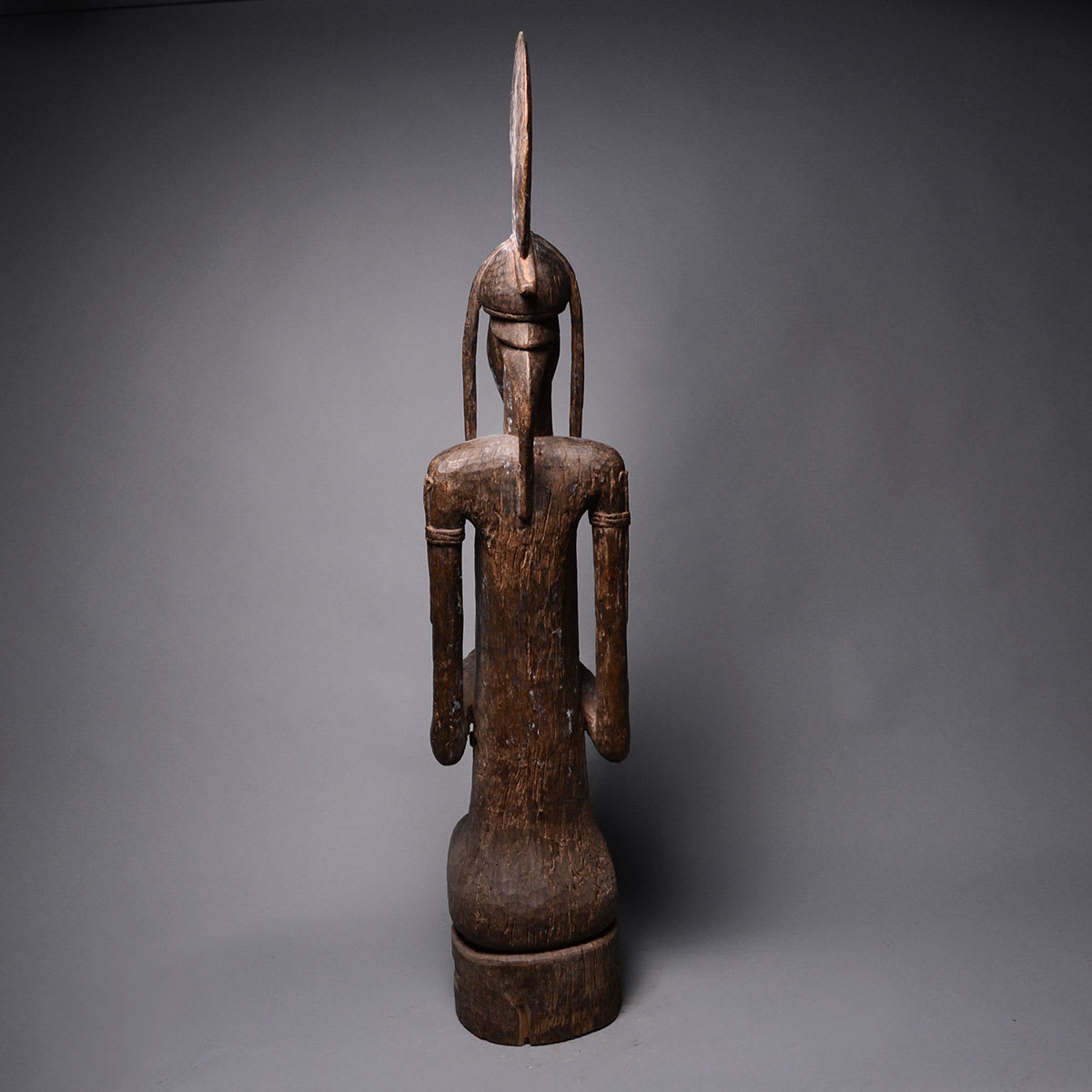Bambara Wooden Guandousou Sculpture of a Mother and Child, 19th Century CE - 20th Century CE
Wood
FJ.1513DC
Further images
The African tribes, such as the Bambara, preferred to think of the spirits of their ancestors collectively rather than in terms of separate individuals. This is the result of the...
The African tribes, such as the Bambara, preferred to think of the spirits of their ancestors collectively rather than in terms of separate individuals. This is the result of the animism that underlies their religious beliefs. Such religious beliefs have been termed animism because they believed that a spirit exists in every living thing. Spirits dwell in the earth, in rivers and lakes, in the rain, in the sun and moon; still others demand to be appeased in order to promote fertility or cure disease. Their dwelling places may be given the shape of human figures, such as this glorious human figure of mother and child. In this case, such spirits sometimes achieve enough of a stable identity to be viewed as rudimentary deities. This seems to be true of the very fine mother and child figure from Mali. She definitely represents the strongly revered fertility spirits. The Bambara would dance and act out similar dramatic ceremonies to appease this deity in order to promote fertility. She wears a helmet-like headdress and her long locks of hair touch her predominant breasts. Her child is nestled at her abdomen and the slight swelling of her belly may represent another child on its way. We feel the thrill of birth through this spectacular figure and the great emotional intensity of dances and ceremonies remains imbued in the powerful appearance of this carving today
16
of
16







